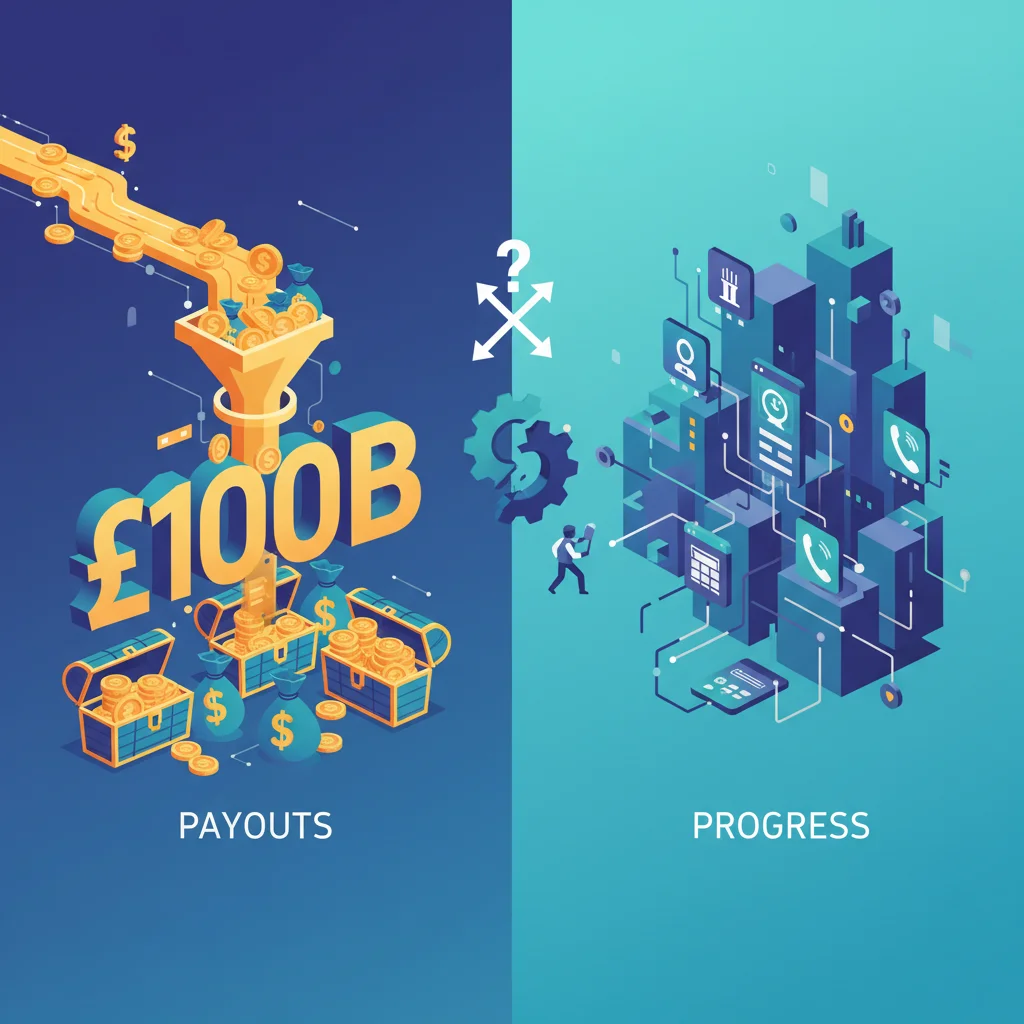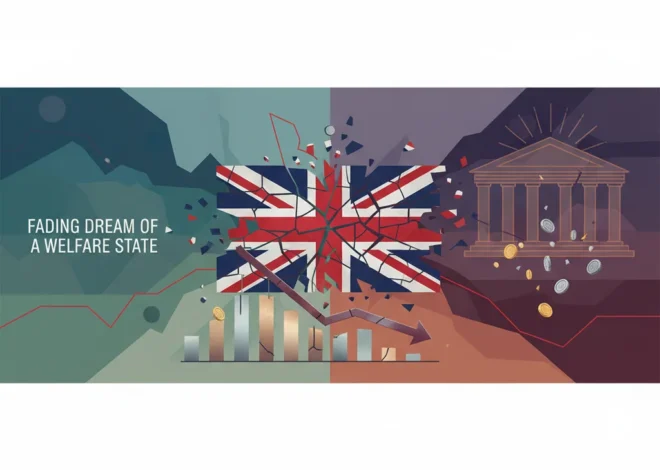
The £100 Billion Question: Are Banks Prioritizing Payouts Over Progress?
It’s a familiar story for many of us. You open your banking app, and it feels a decade behind the seamless experience of your favorite ride-sharing or food delivery service. You hear news of another local branch closing, pushing essential services further away. Or perhaps you’re a business leader, finding the process of securing a loan for a promising new venture to be a slow, bureaucratic grind. These individual frustrations aren’t isolated incidents; they are symptoms of a much larger, systemic issue brewing in the heart of our financial system.
While customers and businesses grapple with these challenges, the banking sector has been channeling staggering sums of money in a different direction. According to a letter published in the Financial Times by Simon Youel, Head of Policy & Advocacy at Positive Money, major UK banks have distributed over £100 billion to shareholders since 2018 through dividends and share buybacks. This raises a critical question for the modern economy: are banks sacrificing long-term resilience, innovation, and economic support for short-term stock market gains?
This isn’t just a debate for economists and finance professionals. The way banks allocate their capital has profound implications for everyone—from individual savers and small business owners to large-scale investors and the overall health of our national economy. In this article, we will delve into the complex world of shareholder payouts, explore the opportunity cost of this financial strategy, and analyze what it means for the future of banking and investing.
Understanding the Allure of Shareholder Payouts
Before we critique the practice, it’s essential to understand why shareholder payouts are a cornerstone of modern corporate finance. For publicly traded companies, including all major banks, delivering value to shareholders is a primary objective. This is typically achieved in two ways:
- Dividends: These are direct cash payments made to shareholders, usually on a quarterly basis. They represent a share of the company’s profits and are a reward for owning a piece of the business.
- Share Buybacks: This is when a company uses its cash to repurchase its own shares from the open market. This reduces the number of outstanding shares, which in turn increases the earnings per share (EPS) and, theoretically, boosts the stock market price of the remaining shares.
From the perspective of a bank’s board, these actions are perfectly logical. They signal financial health and confidence to the market, satisfy the demands of institutional investors, and often directly impact executive compensation, which is frequently tied to stock performance. In a competitive market, failing to offer attractive returns can lead to investors selling their stock, driving the price down and making it harder to raise capital in the future.
However, the argument put forth by critics is that this focus has become myopic. The relentless pressure to maximize short-term shareholder value can create a dangerous tunnel vision, causing leadership to neglect the foundational investments that ensure a company’s—and an economy’s—long-term viability.
Beyond the Crown: Deconstructing the £1M Bitcoin Scam of a Fake Royal
The Hidden Cost: What £100 Billion Could Have Funded
Capital is a finite resource. A pound directed towards a share buyback is a pound that cannot be used to upgrade a creaking IT system, lend to a growing business, or improve customer service. This concept of opportunity cost is at the heart of the debate. While the £100 billion figure is striking, its true impact is revealed when we consider the alternative uses for that capital.
The following table illustrates the potential trade-offs, comparing shareholder payouts against critical areas of underinvestment that directly affect customers and the broader economy.
| Area of Investment | Description & Impact |
|---|---|
| Technology & Digital Transformation | Modernizing legacy core banking systems, improving cybersecurity, developing user-friendly mobile apps, and integrating advanced financial technology (fintech) like AI for better risk assessment and customer support. Failure to invest here leaves banks vulnerable to nimble fintech challengers. |
| Small & Medium-Sized Enterprise (SME) Lending | SMEs are widely considered the engine of economic growth and job creation. Increased lending capacity could fuel innovation, expansion, and employment. A report from the Federation of Small Businesses has consistently shown that access to finance remains a major barrier for SMEs. |
| Customer Service & Infrastructure | Investing in better-staffed call centers, maintaining a reasonable network of physical branches for complex services, and training staff to handle the evolving needs of customers. Underinvestment leads to customer frustration and attrition. |
| Strengthening Capital Buffers | Holding more capital in reserve beyond the regulatory minimums to better withstand future economic shocks. This increases the resilience of the entire financial system, preventing the need for future bailouts (source). |
When viewed through this lens, the decision to prioritize payouts appears less like prudent financial management and more like a strategic gamble on the future. The short-term sugar rush of a higher stock price may be masking a long-term decline in competitive advantage and societal utility.
The Ripple Effect: Who Really Pays the Price?
The consequences of this capital allocation strategy extend far beyond bank boardrooms. The decisions made have a cascading effect across the entire economic landscape, impacting various stakeholders in different ways.
Investors and the Illusion of Value
For those involved in investing and trading, large payouts can seem like an unmitigated good. However, seasoned investors understand the difference between a company returning excess cash it cannot productively reinvest and a company starving its future growth to satisfy the market. A bank that consistently underinvests in its technological infrastructure is accumulating “technical debt.” Sooner or later, that debt comes due, either through a catastrophic system failure, a major data breach, or a slow, grinding loss of market share to more innovative competitors. The dividends of today could be funded by the capital losses of tomorrow.
The Economy and a Widening Innovation Gap
A healthy banking sector acts as the circulatory system of the economy, channeling capital to its most productive uses. When banks pull back from their core function of lending in favor of financial engineering, the economy suffers. Start-ups with groundbreaking ideas struggle for funding. Established businesses find it harder to get loans for expansion. This creates a drag on productivity, innovation, and job growth. As agile fintech firms and neobanks step in to fill the gaps, they often do so in niche, high-margin areas, leaving the traditional, more economically vital (but less profitable) lending to stagnate.
The Future of Banking Itself
Perhaps the greatest risk is to the banks themselves. The world of finance is in the midst of a technological revolution. Innovations in blockchain, artificial intelligence, and decentralized finance are not just improving existing processes; they are fundamentally challenging the traditional role of banks as intermediaries. A bank that fails to invest heavily in this new era of financial technology is essentially planning for its own obsolescence. By focusing on returning capital to shareholders, they risk having no viable business from which to generate future capital.
The 0.001% Solution: Could a Micro-Tax on Every Transaction Fix the Economy?
Forging a More Sustainable Path Forward
Addressing this imbalance requires a multi-faceted approach involving a shift in mindset from corporate leaders, investors, and regulators. The goal is not to eliminate shareholder returns but to rebalance them with the critical need for long-term investment.
- Rethinking Executive Incentives: Corporate boards should redesign compensation structures to reward long-term value creation. Metrics could include customer satisfaction scores, technological milestone achievements, market share growth, and SME lending targets, rather than being overwhelmingly tied to short-term share price.
- Promoting Investor Stewardship: Large institutional investors, such as pension funds and asset managers, have a powerful voice. They can and should use their influence to pressure bank boards to adopt more sustainable, long-term strategies. This involves moving beyond the quarterly earnings cycle and focusing on the health of the business over a five- or ten-year horizon.
- A Potential Role for Regulation: Regulators could explore frameworks that encourage reinvestment. This might involve “counter-cyclical capital buffers” that are linked not just to systemic risk but also to levels of productive lending to the real economy. While heavy-handed intervention is often counterproductive, policy can help shape incentives.
Ultimately, the path to a more robust financial future lies in recognizing that the interests of shareholders, customers, and the economy are not mutually exclusive—they are deeply intertwined. A bank that invests in cutting-edge technology and provides exceptional service will attract and retain more customers. A bank that actively lends to and supports a thriving economy will benefit from the prosperity it helps create. In this model, sustainable profits and healthy shareholder returns become the *result* of a well-run, forward-looking business, not the sole objective.
The £100 billion question is not just about how banks spend their money. It’s about what kind of financial system we want: one that extracts value for the few in the short term, or one that creates lasting value for all stakeholders and powers a dynamic, innovative economy for generations to come.
Square Pegs, Round Holes: Why Crypto Demands a New Regulatory Playbook


